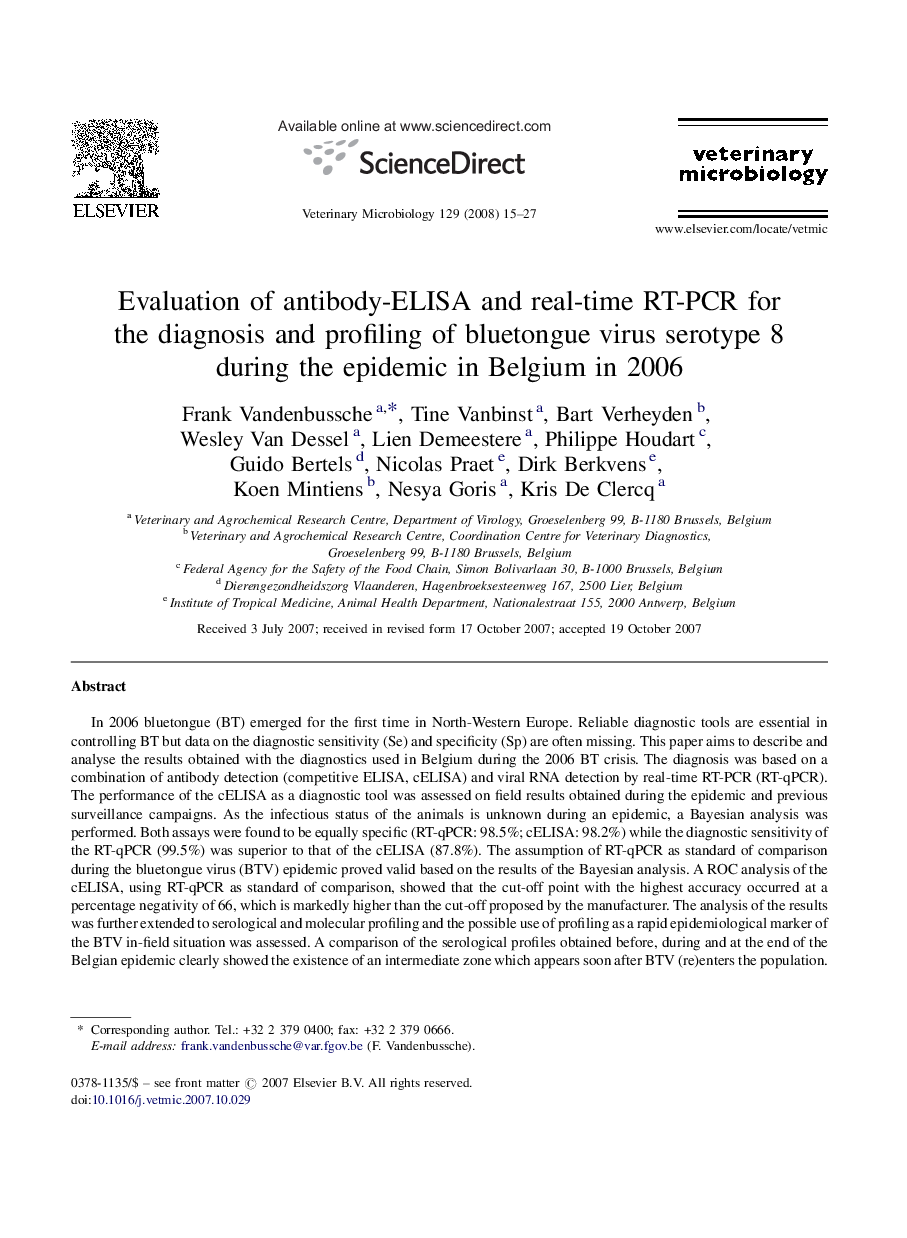| کد مقاله | کد نشریه | سال انتشار | مقاله انگلیسی | نسخه تمام متن |
|---|---|---|---|---|
| 2468830 | 1555440 | 2008 | 13 صفحه PDF | دانلود رایگان |

In 2006 bluetongue (BT) emerged for the first time in North-Western Europe. Reliable diagnostic tools are essential in controlling BT but data on the diagnostic sensitivity (Se) and specificity (Sp) are often missing. This paper aims to describe and analyse the results obtained with the diagnostics used in Belgium during the 2006 BT crisis. The diagnosis was based on a combination of antibody detection (competitive ELISA, cELISA) and viral RNA detection by real-time RT-PCR (RT-qPCR). The performance of the cELISA as a diagnostic tool was assessed on field results obtained during the epidemic and previous surveillance campaigns. As the infectious status of the animals is unknown during an epidemic, a Bayesian analysis was performed. Both assays were found to be equally specific (RT-qPCR: 98.5%; cELISA: 98.2%) while the diagnostic sensitivity of the RT-qPCR (99.5%) was superior to that of the cELISA (87.8%). The assumption of RT-qPCR as standard of comparison during the bluetongue virus (BTV) epidemic proved valid based on the results of the Bayesian analysis. A ROC analysis of the cELISA, using RT-qPCR as standard of comparison, showed that the cut-off point with the highest accuracy occurred at a percentage negativity of 66, which is markedly higher than the cut-off proposed by the manufacturer. The analysis of the results was further extended to serological and molecular profiling and the possible use of profiling as a rapid epidemiological marker of the BTV in-field situation was assessed. A comparison of the serological profiles obtained before, during and at the end of the Belgian epidemic clearly showed the existence of an intermediate zone which appears soon after BTV (re)enters the population. The appearance or disappearance of this intermediate zone is correlated with virus circulation and provides valuable information, which would be entirely overlooked if only positive and negative results were considered.
Journal: Veterinary Microbiology - Volume 129, Issues 1–2, 25 May 2008, Pages 15–27